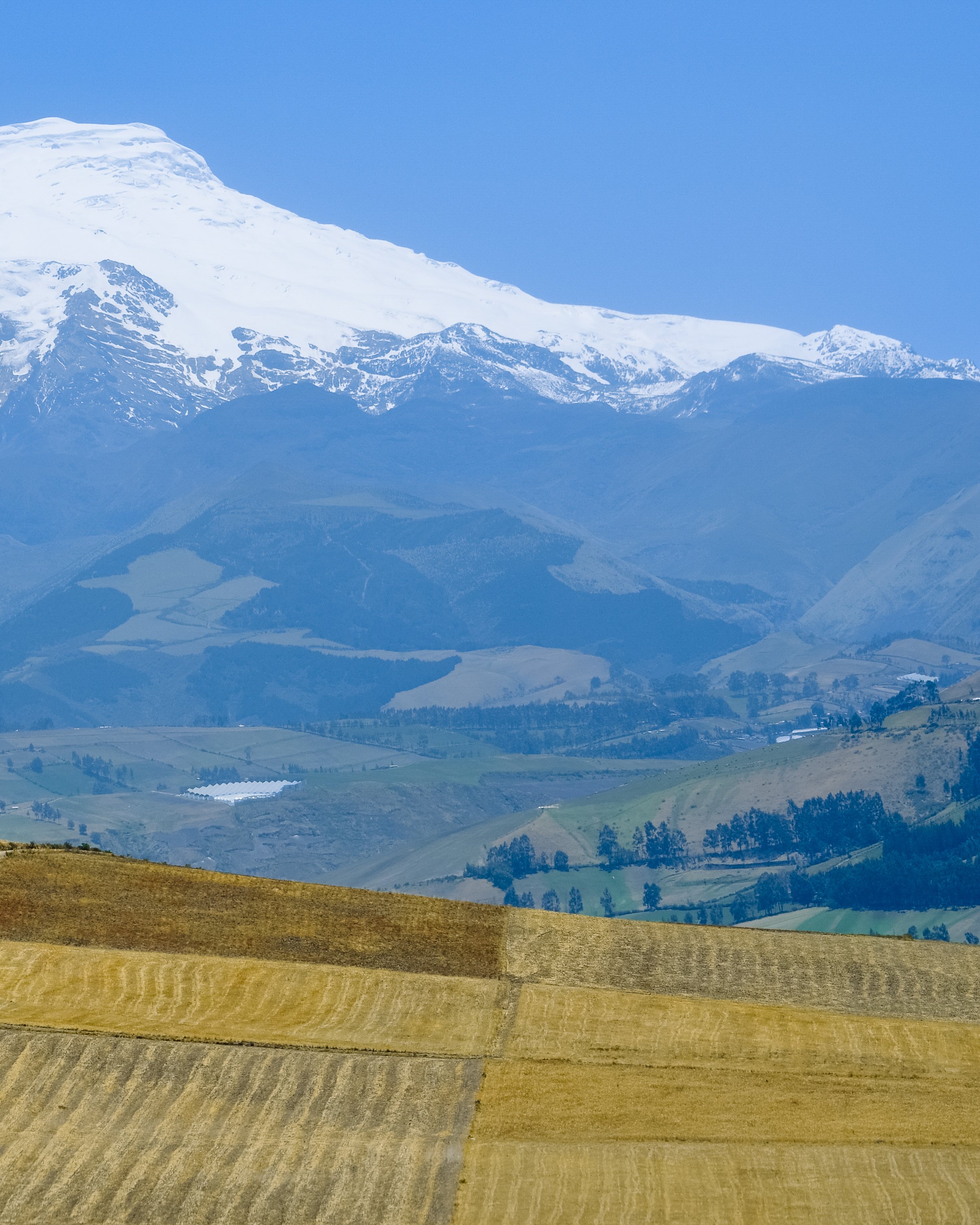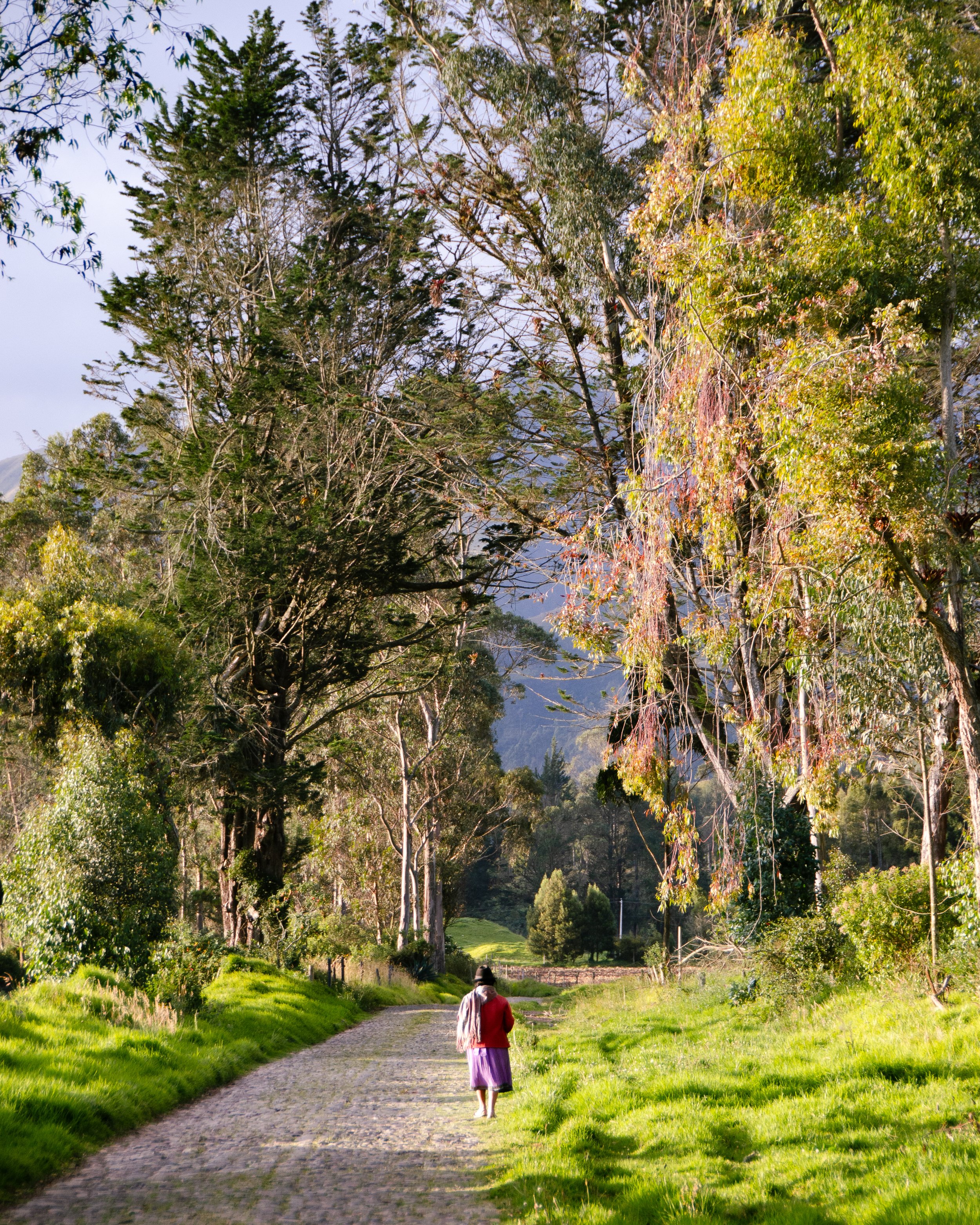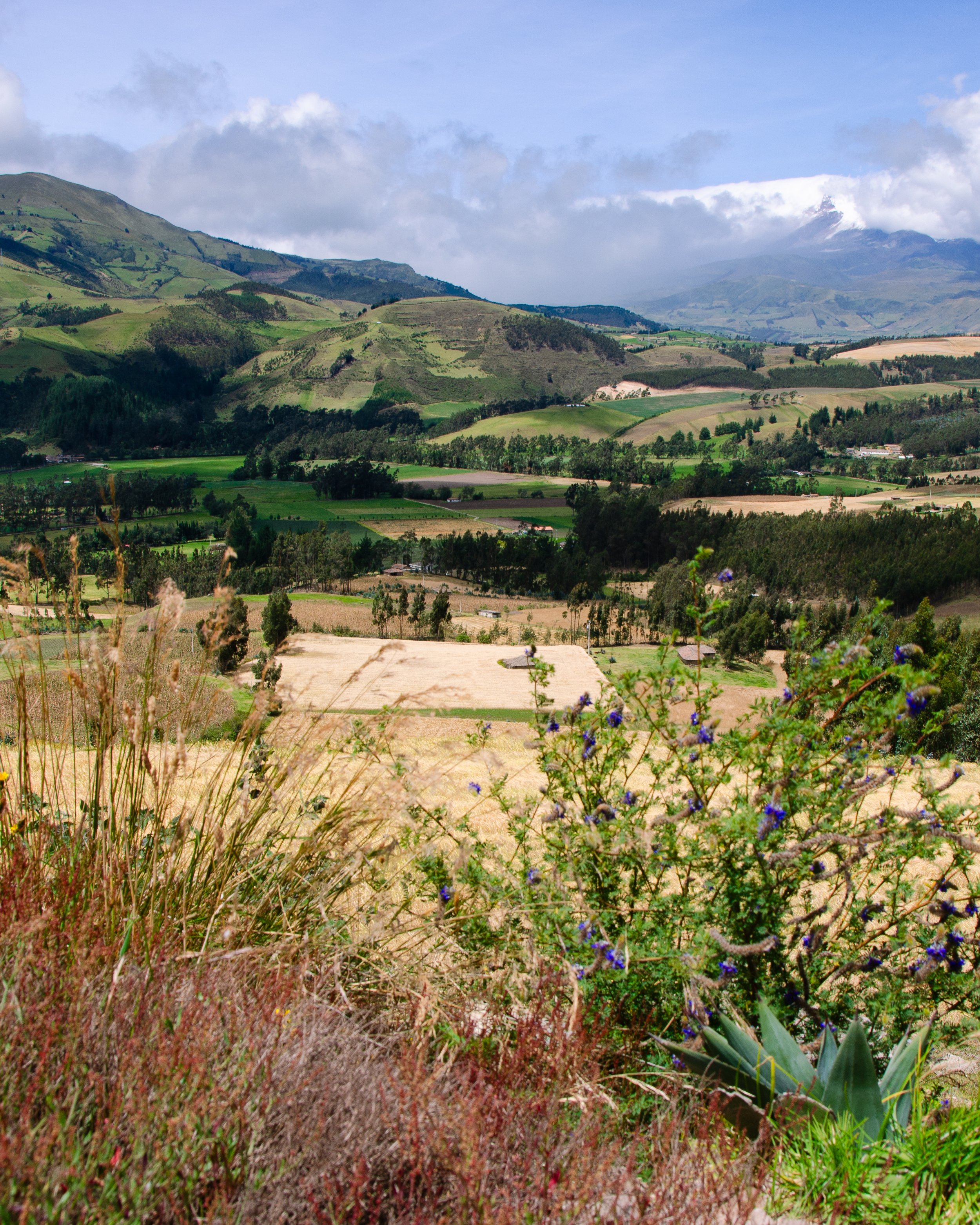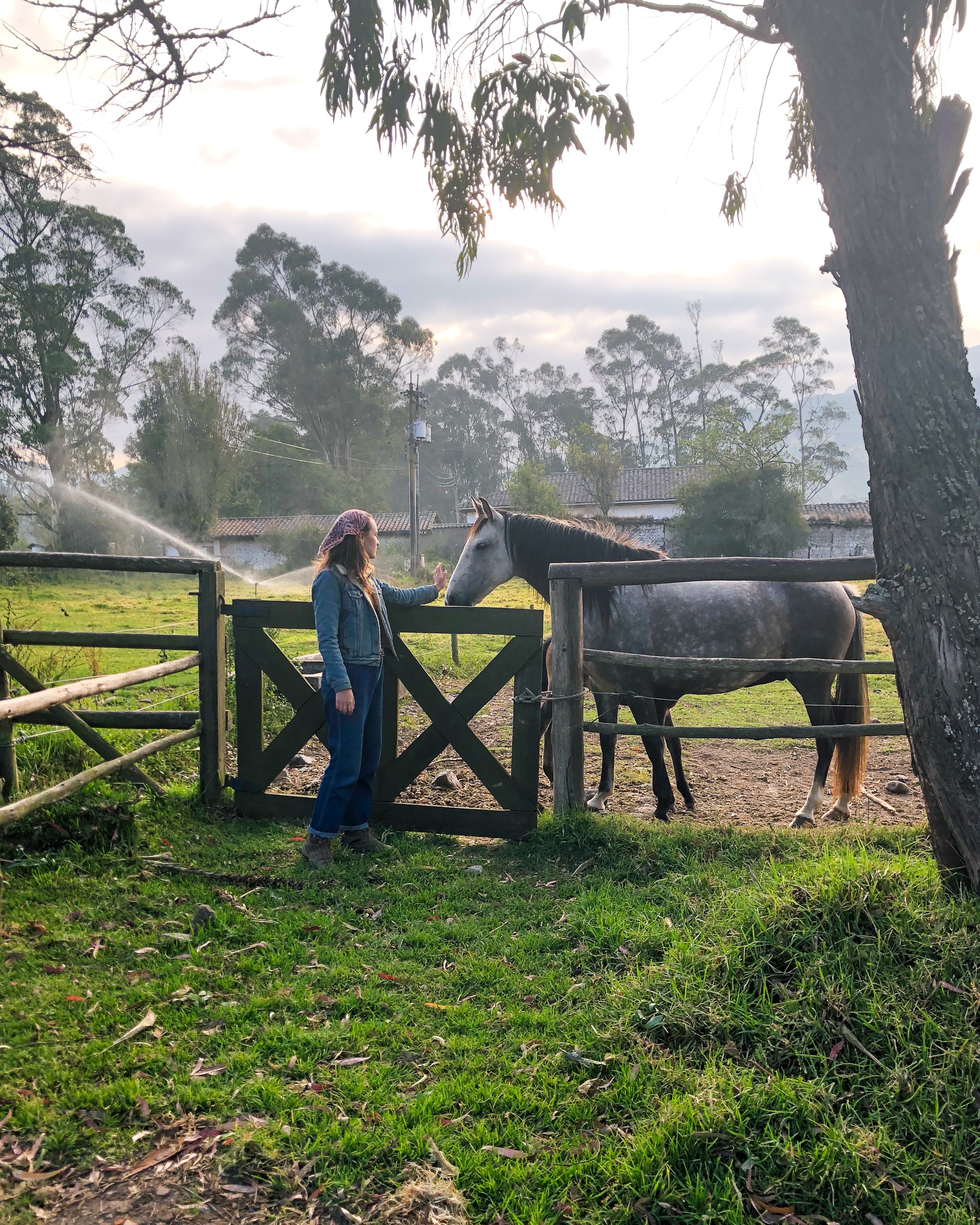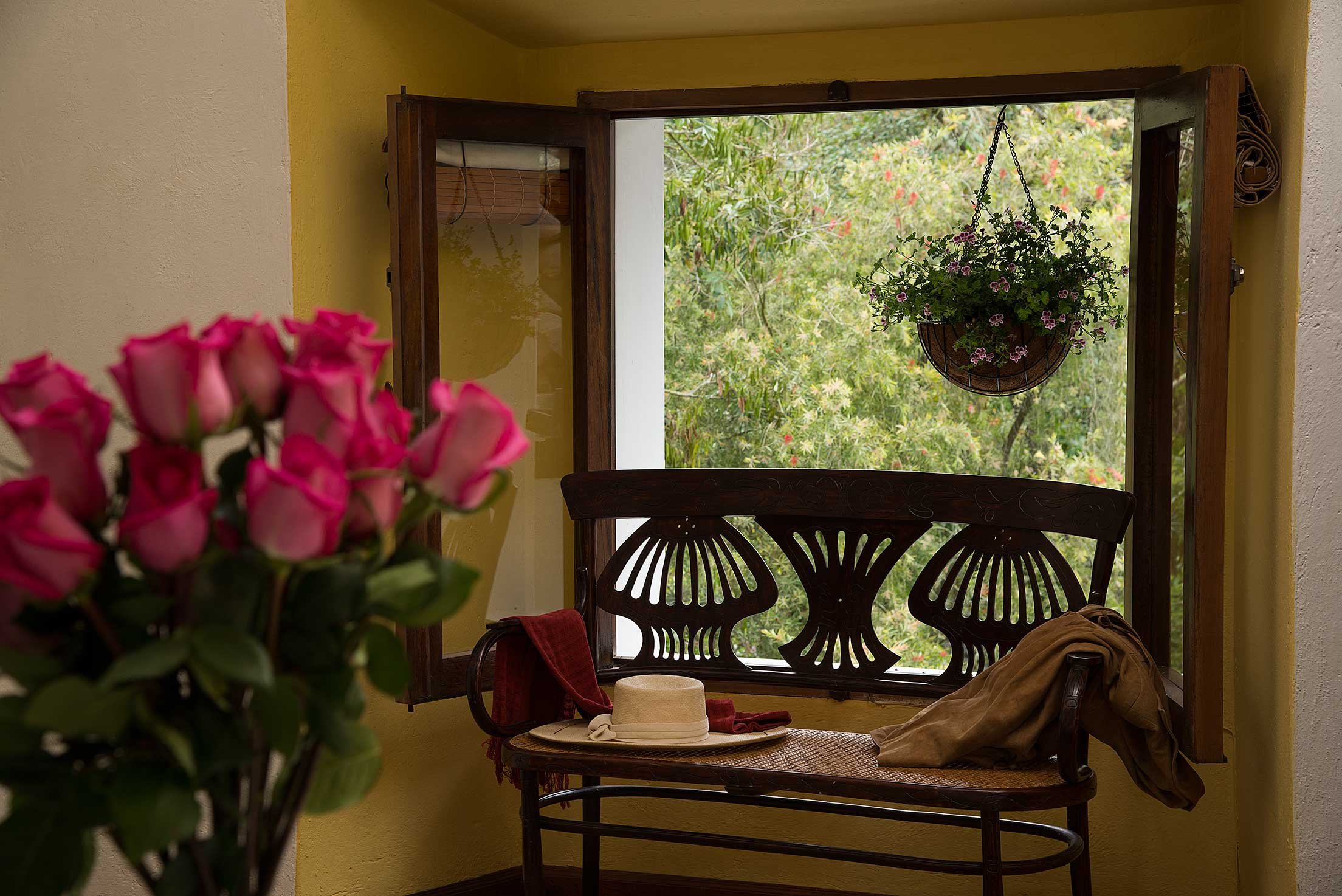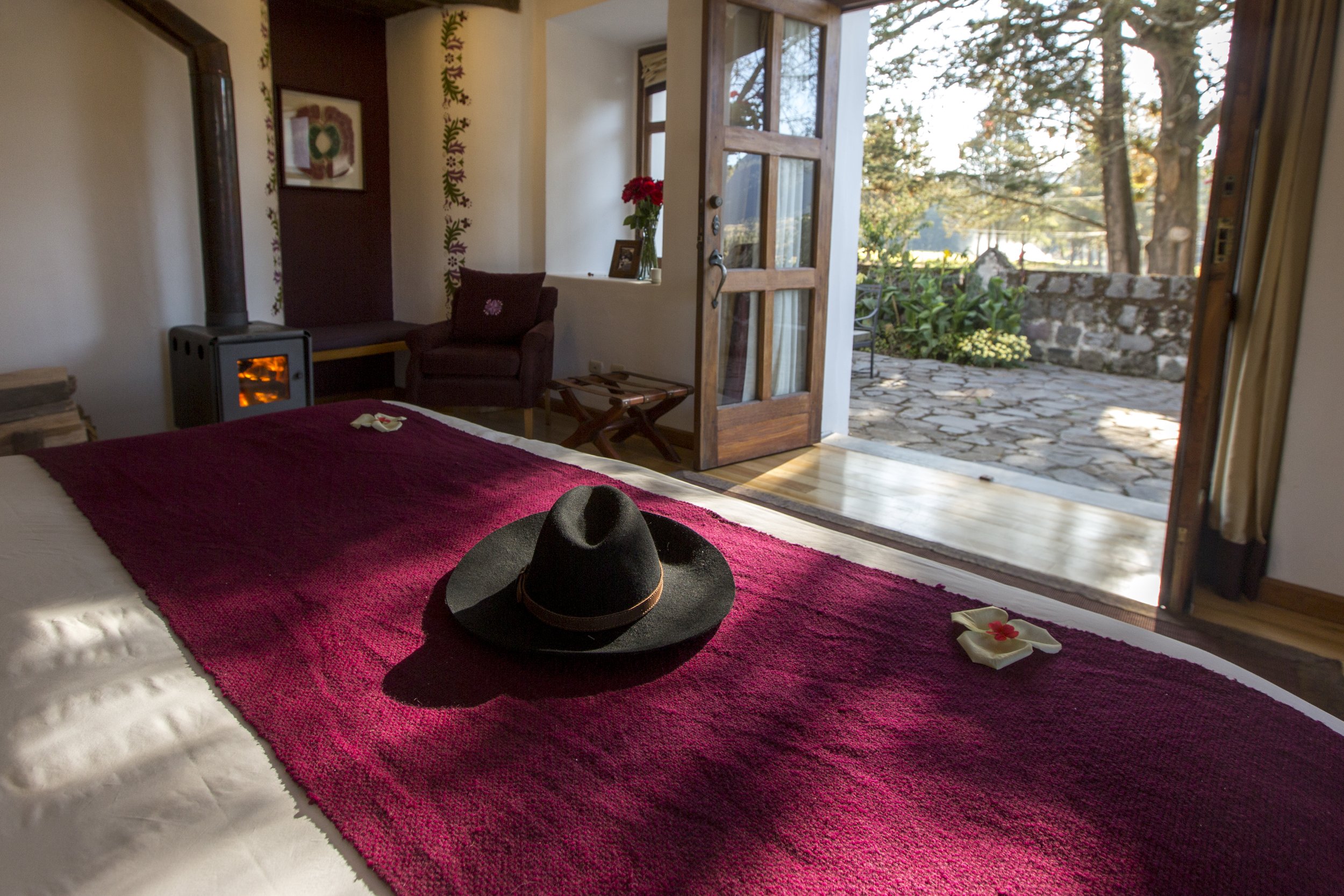
Blog
Among the Volcanoes at Hacienda Zuleta
in Blog Posts
This post was written by Jasper Roberson-Schulz about his stay at Hacienda Zuleta.
Afternoon sun breaks through a light cloud cover in the high Andes as the van rolls out of Hacienda Zuleta taking me back to Quito. I look through the van’s rear window at the foothills covered in cloud forest and stables filled with horses that circle the Spanish era estate where I spent my past three days. Surrounded by volcanos that shoot skyward, the Hacienda looks up at farmlands and homes built into land over ten thousand feet above sea level. Because the equator is temperate, life at this altitude is possible in a way it can't be in most other places, making it rather unique when compared to all the places I know. The distinct way of Ecuador's Andean communities is immediately evident in a walk through the small town of Zuleta, especially on days when the markets are open, as an alpaca wanders into the middle of an inter-town soccer match. The streets are filled with family and friends eating bread and watching kids run freely. In the midst of the high terrain and forests, this is a place where humans and the natural world live in concert, and with the beautiful landscape comes a calm way of life that is inviting and comfortable.
Two days ago, when I first stepped onto the plaza at the entrance to the hacienda, I was greeted by a place that epitomizes the high Andes’ cultural and natural allure. Built by Spaniards in the eighteenth century and then later used as the private home of two former Ecuadorian presidents, the latest being Galo Plaza Lasso, the history and care put into Hacienda Zuleta amazed me. From the gardens to the incredibly designed furniture to the rooms and nooks for sitting and reading with a cup of coffee, the first evening at the Hacienda charmed me. I sat in the library next to one of the several honor bars spread throughout the maze of rooms that connect the Hacienda's various houses, sipping a slightly strong pisco sour and looking at the collections of Galo Plaza. I imagined what it might have been like to grow up in a place like this, tucked away in the countryside. It must have been an incredible place to be a kid, riding horses with friends and playing hide and seek at night while getting lost in the network of halls. As luck would have it, I did not need my imagination for long. After finishing my pisco sour, I wandered over to the nightly tasting of Zuleta-made cheeses, where Galo Plaza's daughter Margarita Plaza Pallares came in to greet those of us sitting around the fire. Over the next few hours and glasses of wine, she and her nephew Fernando Polanco Plaza told us tales of growing up at the Hacienda. Their stories had a warm nostalgia that felt deeply connected to the grounds. Their memories resonate in the bricks and footprints, making Hacienda Zuleta's long history feel personal.
Now, as I am leaving Hacienda Zuleta, passing by rose farms as livestock fade into the distance, the road ahead is winding back to my home. Though the van is carrying me away, my mind falls to yesterday. Yesterday I saw condors, the only two mating pairs in captivity in all of Ecuador. The route to the condor exhibit was a hike up a mountain and then down into a valley. The trail made its way past mysterious step-pyramids, the markings of an ancient civilization too far gone to know much of anything about what they had once been. There's a nature preserve to the Hacienda's back, the steep slopes grown over with cloud forest, with the potential to spot a spectacled bear clamoring through the undergrowth, looking for a tasty treat. That is where the condors live, the giant winged beasts, ugly and beautiful, that are the national bird of a country that lives so close to the sky. When I arrived at the exhibit, I met with Yann Potaufeu, the Hacienda's naturalist and keeper of the condors, and his little dog Emma. He told me about the constant shifting of nature and human development, the condor's long battle towards repopulation with only 120 or so wild condors in all of Ecuador, the burning of forests for pastures, and the hope that comes with the regrowth of the dense cloud forest. I then walked back along a cobbled stone road to the Hacienda for another delicious lunch and horseback ride to the local waterfall. Last night, I went to bed feeling optimistic about the world. Hearing about how quickly the wildlife in the nature preserve has bounced back over the past several years made me believe we can turn this ship around if we just allow things to live as they would have it.
Hacienda Zuleta and the surrounding towns and mountains are out of sight when my attention is brought back to the drive south to Quito, ice cream being sold out of carts every five kilometers along the side of the highway. The road out feels much like it did two days ago on the way up. The biggest difference is that now I know it will not be the last time I make my way into the volcanos to stay in what has become a familiar and enchanting place.




